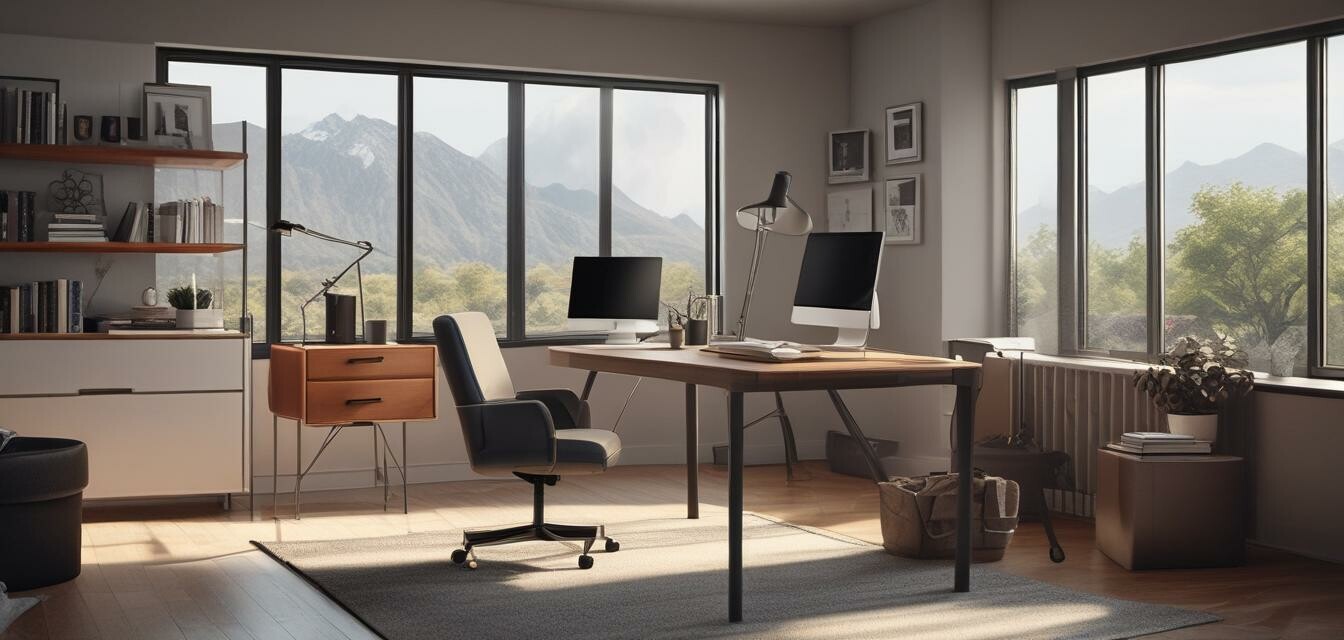
Smart furniture innovations for home offices
Key Takeaways
- The rise of smart furniture promotes better organization and space utilization.
- Technological integration in furniture enhances productivity and functionality.
- Ergonomic designs are essential for a comfortable home office environment.
- Materials play a crucial role in both aesthetics and sustainability.
- Stay updated on trends to create a modern workspace that boosts efficiency.
As remote work continues to flourish, the world of home office furniture is rapidly evolving. Smart furniture technologies are at the forefront of this evolution, reshaping how we approach our work-from-home setups. In this article, we'll delve into the innovative designs, materials, and functionality of the latest smart furniture trends that enhance productivity and comfort in home offices.
Understanding smart furniture
Smart furniture refers to pieces that integrate technology to improve their usability and functionality. This category includes desks, chairs, and storage units that offer advanced features such as health monitoring, automated adjustments, and responsive designs. The goal is to create an environment that fosters productivity while ensuring comfort during long working hours.
Key features of smart furniture
| Feature | Description |
|---|---|
| Height-adjustable desks | Allows users to switch between sitting and standing positions to enhance comfort and improve posture. |
| Integrated charging stations | Built-in wireless charging pads or USB ports make it convenient to charge devices without clutter. |
| Health monitoring | Some pieces can track metrics like sitting time, reminding users to take breaks for movement. |
| Smart lighting | Automatically adjusts brightness and color according to the time of day or user preferences. |
| Modular designs | Offers customizable configurations that allow for versatile workspace setups suitable for various tasks. |
The importance of ergonomic designs
Ergonomics is at the core of designing smart furniture. Ergonomically designed furniture promotes health and efficiency, reducing discomfort during long working hours. Here are essential ergonomic features to consider when choosing smart furniture for your home office:
- Adjustable chair heights: Make sure your chair can match your desk height to promote good posture.
- Supportive backrests: Look for chairs that offer lumbar support to reduce back strain.
- Swivel functionality: Enables easy movement and access to different areas of your workspace.
- Headrest options: Provides additional neck support, especially for tasks that require concentration.
Current trends in smart furniture
The following trends are shaping the future of smart furniture in home office environments:
- Increased use of sustainable materials, such as bamboo or recycled plastics, to create ecologically-friendly furniture.
- The rise of modular furniture systems that adapt to individual needs and workspace changes.
- Integration of technology like voice control and artificial intelligence to manage furniture settings.
- Multi-functional pieces that serve various purposes without taking up too much space.
- Development of app-connected furniture for remote adjustments and monitoring.
Choosing the right materials
The materials used in smart furniture have a significant impact on their functionality, durability, and appearance. Here are some popular materials to consider:
| Material | Benefits |
|---|---|
| Bamboo | Environmentally friendly, lightweight, and durable. |
| Recycled plastics | Occur with minimal environmental impact and provide water resistance. |
| Metal (aluminum, steel) | Provides structural integrity and stability, ideal for adjustable pieces. |
| Wood | Classic aesthetic that adds warmth to a professional environment. |
| Eco-leather | A sustainable alternative to traditional leather, often resistant to wear. |
Maximizing your home office space
Smart furniture solutions can significantly enhance your office space. Here are some tips for making the most of your setup:
Tips for beginners
- Start with essential desk equipment that fits your workflow.
- Incorporate organizers for cables and office supplies to keep your workspace neat.
- Integrate furniture that can be easily reconfigured to suit different tasks or work styles.
- Consider the layout and natural light when positioning furniture.
- Personalize your workspace with decor that inspires you while maintaining a professional tone.
Conclusion
Smart furniture innovations are revolutionizing the way we set up our home offices. With their blend of technology, design, and sustainability, these pieces not only boost productivity but also ensure comfort and organization. Staying informed about the latest trends, features, and materials will allow you to craft a workspace that meets your unique needs. Embrace smart furniture for a modern, efficient home office that adapts to your lifestyle.
Pros
- Enhances productivity through adjustable features.
- Promotes good health with ergonomic designs.
- Utilizes space efficiently with modular options.
- Integrates technology for a smarter workspace.
- Reduces clutter with built-in storage solutions.
Cons
- Higher initial investment compared to traditional furniture.
- May require ongoing maintenance for tech components.
- Some designs may not fit all styles or tastes.
- Availability can be limited based on local suppliers.
For more insights on modern office setups, consider visiting our buying guides, or explore trends in news and trends. If you are looking for more inspiration, check out our tips and inspiration section.